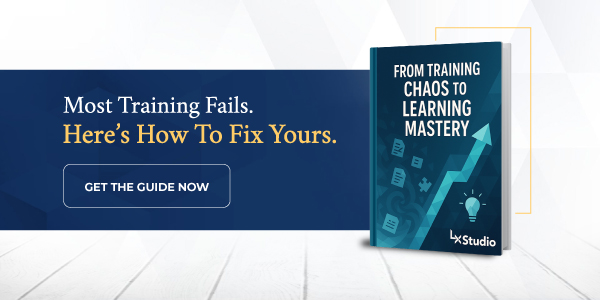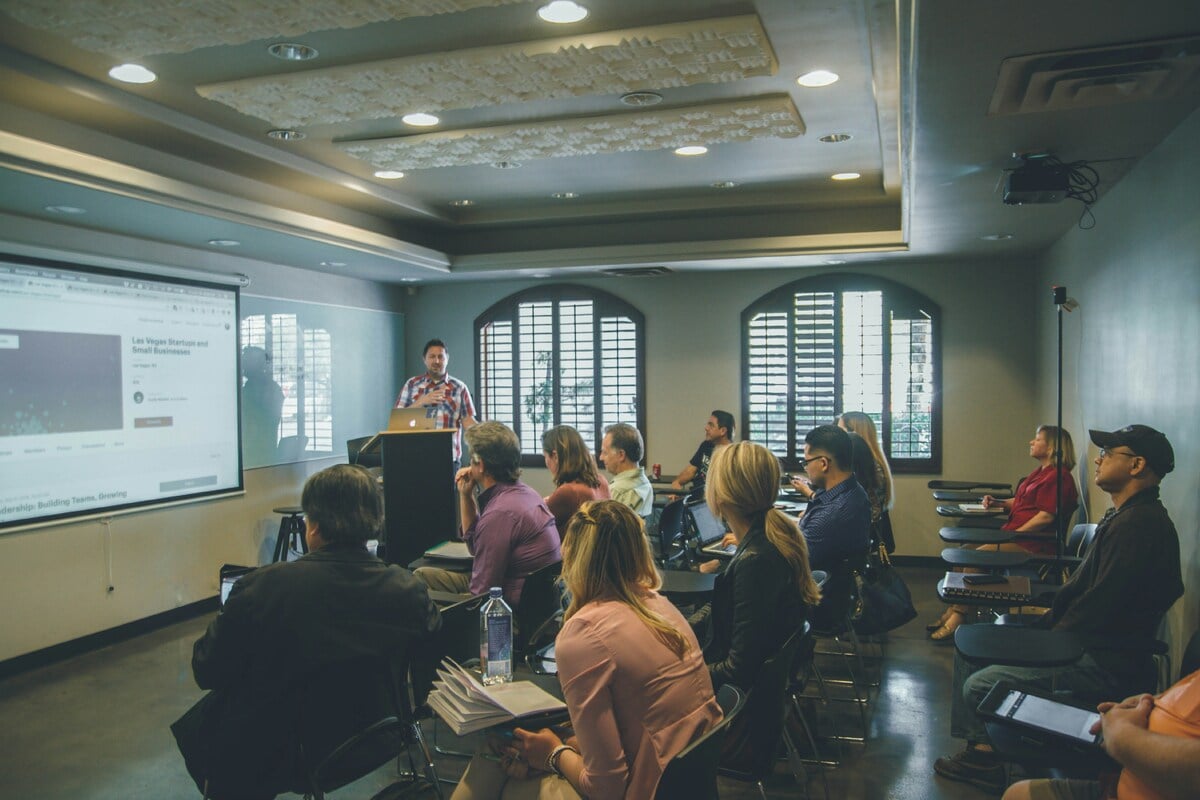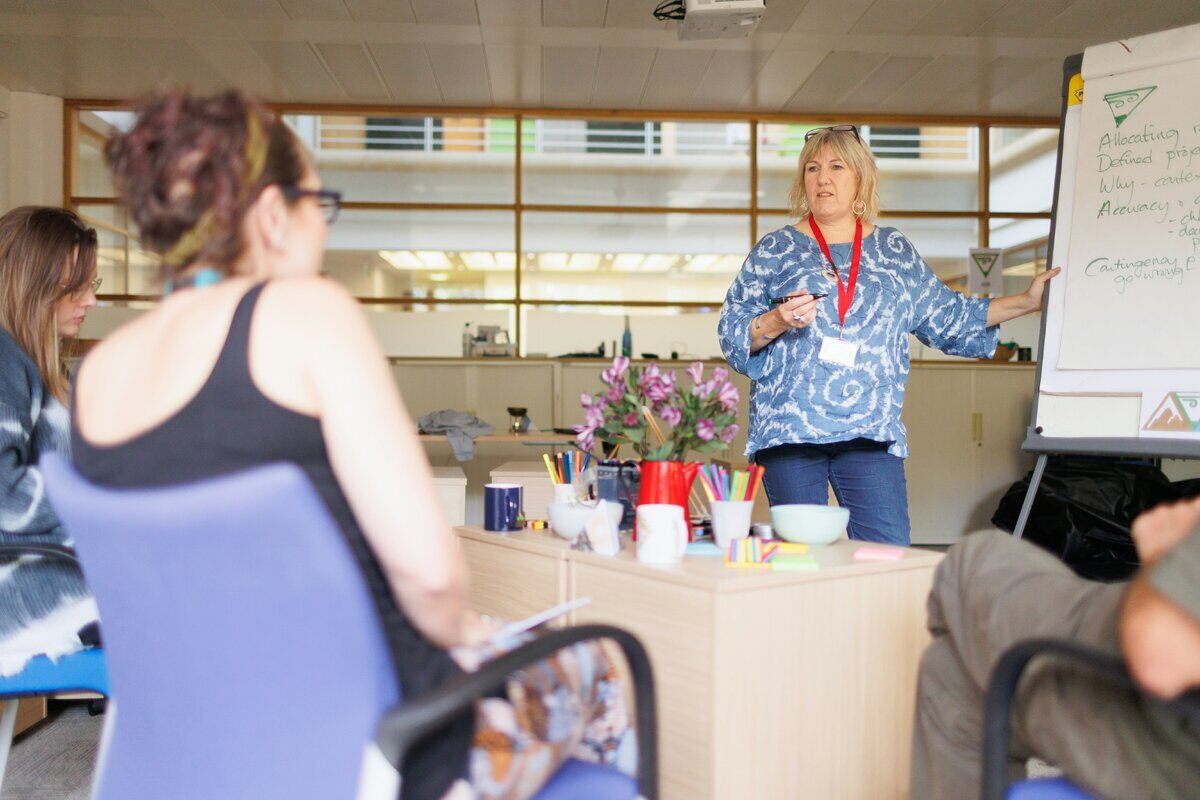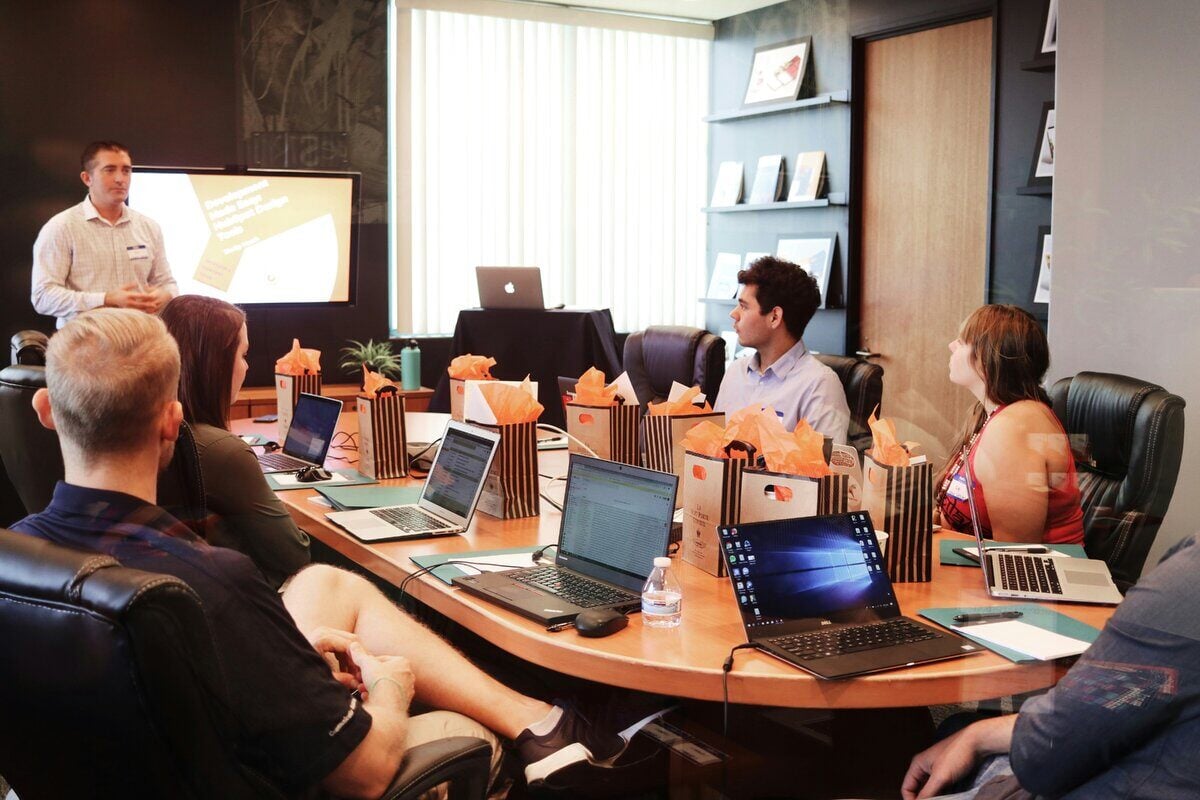
Why One-and-Done Training Fails—And How To Build A Skills Ecosystem
On the surface, the importance of workplace training and ongoing development appears straightforward - to the point where you might even consider it obvious.
Yes, it's true that if you teach people the skills they need to do their jobs, they do them better. Better employees become more profitable employees.
But the benefits actually run a fair bit deeper than that, too.
According to one recent study, 51% of workers believe that the skills needed to do their jobs today will "change substantially in the next five years."
Despite that, 29% of workers say they're unlikely to switch jobs in the near future.
This means that today, many businesses are sitting on a wealth of employees who want to do their best, fear they soon won't have the knowledge to do it, and aren't planning on actually switching jobs as a result.
In that scenario, learning becomes the only way to fend off a potentially major problem.
To say nothing of the fact that 57% of employees now expect to learn on a "just in time" basis, which is ALSO a major problem for employers.
But what does that look like in practice?
Far too many organizations make the mistake of treating training as a "one and done" scenario. It's something that you "do once and forget about" - which is a problem, since "forgetting about" anything is the opposite of the intended outcome.
Instead, you need to start laying the learning pathways to build a true skills ecosystem.
One that can support people not only as they are today, but as you need them to be tomorrow and beyond.
Getting to this point requires a major shift in your point of view - not just in terms of how you think about training as a concept, but with regard to what ongoing education actually looks like on a daily basis.
The Problem with One-Off Training
If you had to sum up the problem with one-off training in a single metaphor, you might say that it's the fast food of professional development.
These sessions are quick, easy to serve up, and they feel like they’re accomplishing something in the moment.
But much like that cheeseburger you grabbed at lunch, the benefits don’t last long - and they’re probably not fueling long-term growth.
Again - it's not that there is anything inherently wrong with a one-off training session in the moment.
But just as you'd never want to build your diet long-term around fast food, you'd never want to stack your ongoing education strategy with one-off training under the assumption that you're coming out better for it when everything is said and done.
Poor Retention and Application
Maybe the biggest issue with one-off training is that it will almost certainly lead to poor retention.
If you can't remember something that you learned, how are you supposed to apply it to real life in some meaningful way?
The answer is simple - you can't.
This is true from virtually any angle you choose to examine it from.
Let's say you were attending a workshop on negotiation skills.
It’s engaging, the speaker’s great, you take a bunch of notes… and for all intents and purposes, the story pretty much ends there.
Flash forward to a month later, you can barely recall the key points, let alone apply them during a high-stakes client call.
That’s because knowledge decays without reinforcement. In fact, studies even suggest we forget up to 70% of new information within 24 hours if we don’t revisit it.
Without consistent application or follow-up, training becomes a "check-the-box" exercise rather than a tool for meaningful development.
Misaligned with Career Growth
Another one of the major issues associated with one-off training has to do with how these classes tend to be disconnected from the broader arc of an employee’s career.
You might teach someone presentation skills at year two - but if their role doesn’t require that skill until year five, the timing is off.
You've effectively taught them something that, while it's factually correct, is functionally worthless right now.
Worse yet, by the time they actually need it, the training has faded.
They barely remember having taken the class at all.
Any skills that they do remember are likely outdated at that point.
To really serve professionals (and their organizations), training needs to align with where people are in their development.
They need to be taught the types of practical skills that they can start putting to good use today.
More than that, they also need to be taught the types of skills that will take them from where they are to where they want to be in the most efficient way possible.
What is a Skills Ecosystem?
Instead of treating learning like a one-time affair, think of it as an ecosystem.
Not only is it interconnected, but it is also evolving, and largely sustainable.
A skills ecosystem doesn’t just deliver knowledge.
It also nurtures that knowledge over time, helping people grow in sync with their roles and aspirations.
Learning as a Journey, Not an Event
Picture learning a bit like planting a garden.
You don’t just toss a seed into the dirt and walk away.
That seed needs some love and care to eventually grow into its full potential.
Without it, the seed will eventually just die - it's as simple as that.
So what do you do?
You water the seed, expose it to sunlight, and keep the weeds out.
Similarly, skills need to be cultivated through continuous learning opportunities.
That might mean revisiting a skill in different contexts, practicing it in real projects, or reflecting on feedback.
When learning is treated as a journey, people stay engaged, build confidence, and gradually move from surface-level awareness to deep expertise.
Key Elements of Sustainable Learning
By far, one of the most important elements of sustainable learning involves some type of structured progression.
There needs to be a clear path, at the beginning, that will allow someone to go from beginner status to the true expert they were meant to be.
That involves a lot of real-world application.
Don't just make people sit and read a book or take an occasional test.
Learning needs to be tied to actual real-world challenges - the types of challenges that people will face on a daily basis.
Feedback loops are another key element of sustainable learning.
Every once in awhile, people need opportunities to reflect.
The path that they're on should be revised and refined as new information comes in.
You can't get to that point without a feedback loop.
Finally, arguably the most important element of any sustainable learning environment is a supportive culture.
Learners need to be a part of a skills ecosystem that encourages growth over the long-term.
Phase-Based Learning Models
To make all this work and operate just as good in real life as it sounds on paper, you need a framework.
That's where phase-based learning models enter the conversation.
Phase-based learning models are an approach that structures skill development into stages.
It's like leveling up in a game, but with fewer monsters to fight and more leadership competencies.
From Awareness to Mastery
Most learning journeys start with awareness.
You might know in a roundabout way what you need to learn and what you'll then be able to accomplish - but right now, that sounds a lot easier said than done.
That's okay, because as the old saying reminds us, the journey of a thousand miles begins with a single step.
From there, learners move into practice, integration, and finally, mastery - where a skill becomes second nature.
You can't just skip right to mastery and hope for the best.
You need to work, little-by-little, through this process.
Then, by the time you get to mastery, it isn't something that has been thrust upon someone.
It's a status they've earned and they can capitalize on daily.
For example, consider emotional intelligence.
The awareness part of this process might begin with recognizing the importance of empathy at work.
Practice involves role-playing conversations or reflecting on difficult interactions.
Integration could mean actively using empathy in team dynamics.
By following that trajectory, mastery would be when people finally feel confident enough to say "you should talk to this person about your problems - they get it."
Sequencing for Depth and Breadth
Never let yourself forget that effective learning isn’t just about what is taught.
When and even how that thing is being taught are just as critical.
If you want to teach someone a very complicated set of steps, you can't just start with the outcome.
You need to walk them through those steps, in a specific way, in a precise order.
Only then will the end of the process land the way that it's supposed to.
In a best-case scenario, sequence learning should build depth - meaning that you're going deep on one skill before layering on complexity.
It should also have breadth, which means adding complementary skills over time.
Regardless of what it is you're actually asking someone to learn, it's safe to say you're probably asking them to digest a lot.
Doing it all in this way - logically and in a forward-thinking manner - will be so much more effective than just dumping it all on them at one time.
Designing for Scalability
At this point, you have to ask yourself the most important question of all:
how do I take these concepts and these goals and make it work not just for individual people, but across an entire organization?
After all, the key to much of this is that there is no "one size fits all" approach to learning.
If everyone is different, but you need to be able to train your entire organization this way, how do you reconcile two things that appear to be at odds with one another?
The answer lies in smart design.
A scalable learning strategy adapts to different roles, levels, and teams - without becoming a logistical nightmare.
Modular and Adaptive Learning
When you hear the phrase "modular and adaptive learning," think of it all a bit like you would LEGO bricks.
Modular programs let you snap together different pieces based on needs and timing.
Maybe an engineer takes a short module on stakeholder communication today and dives into strategic thinking six months later.
Each block builds on the last - but the pathway is flexible.
Adaptive learning tools can even personalize content in real-time, offering faster learners more of a challenge and giving extra support to those who need it.
Truly, it's a win-win situation in every sense of the word, and it's one that is built into this process from the very start.
Supportive Cross-Functional Development
Finally, we arrive at the real business impact that comes when people understand not just their role, but how it fits into the bigger picture.
Cross-functional learning - which is where marketers, engineers, salespeople, and others learn together - fosters collaboration and a more holistic mindset.
If you have a question, you know who to go to for the answer.
If you need help, you know where to get it.
You're no longer existing in a silo - you're an integral part of a living, breathing machine.
Cross-functional development also prepares employees for lateral moves or leadership roles, where understanding multiple perspectives is essential.
In the end, moving away from one-off training toward a sustainable, scalable learning ecosystem isn’t just a passing fad or a "nice thing to have."
These days especially, it’s how organizations build real capability and separate themselves from their competitors.
By designing learning as a journey, sequencing it thoughtfully, and supporting it with flexible, modular programs, we create a culture where growth is continuous and everyone has a roadmap to their next level.
If you'd like to find out more information about skills development, or if you have any additional questions about upskilling strategies that you'd like to discuss with someone in a bit more detail, please don't hesitate to contact the LX Studio team today.






